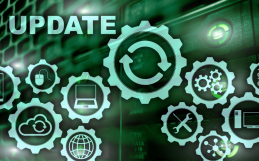A thorough and empathetic approach to new hire onboarding is crucial to success and it’s a first step toward strong employee retention. With the growing emphasis on the importance of work culture and employee morale, a strong onboarding process can provide your team with a sense of security and optimism when entering an unfamiliar environment. First impressions matter. And when people feel safe and empowered, they are positioned to flourish on your team. And the faster you have a new hire feeling productive and empowered, the better the performance results.
We do our best to deliver a positive onboarding experience for all new members of our team, and that starts with having a team that is accountable for delivering on that promise. For us, that’s the Talent Acquisition (TA) team. They are the primary point of continuity from the initial interview through to the end of a new hire’s onboarding (some call it the “probationary”) period once hired. In this blog, we will explore a few key areas of talent acquisition and onboarding that we think are crucial in delivering the right experience.
Regular Check-Ins
After accepting a new position, often new hires have 2-3 weeks before they start the new job. This period can be quite stressful and shouldn’t be left in radio silence from their new team.
Take the opportunity to communicate with the new employees regularly. This will help them through the transition. Our TA team sends check-in emails to the candidate once they have been hired, making sure they have all the information needed. We ensure they have a point of contact with whom they’ve already built a relationship as part of the interview stages. We want them to know that we’re excited for them to join us. This helps a new hire feel confident and prepped for their first day.
Day 1 Readiness
The first day at a new job should be exciting for the new hire, the hiring manager, and for the TA team. The new hire has endured multiple interviews, technical tests, paperwork, and more. Now it’s time to start delivering on the promises. Everyone remembers their first day with anything in life. So how do you make sure it goes smoothly?
As a technology company, we want our employees to be fully geared up with the latest tech (new laptop, big monitors, smartphone, desk phone, headset, etc…). Our internal IT team makes sure that all necessary software is set up on the devices and is ready for use from the moment the new hire arrives. The key to consistency is having our Talent Acquisition Specialists accountable for testing everything in the days leading up to arrival.
Along with their company login credentials and some company swag (who doesn’t like presents?) we also provide them with a detailed agenda for their first day. The new hire can find their orientation sessions, an office walkaround, and intro meetings pre-booked in their calendars by the TA team.
For remote staff (definitely more common these days), we are lucky. Since we are an IT services company, we have the capability to configure, deliver, and remotely set up a workstation for a new hire. And we have dedicated Support Specialists ready on call during day 1 in case the new hire runs into trouble. It requires effort and planning, but for us, it’s worth it.
Process Automation
Standardizing and optimizing the new hire experience hinges on repeatability and automation. Our CRM, service delivery, and project management platform has plenty of automation functionality. And we use the heck out of those to help standardize and automate the workflow and process of getting a new hire onboarded smoothly. Email reminders and task assignments get sent to our support team, to finance, to our hiring managers, and our human resources team.
We treat it like a project we would conduct for a client. Our TA team owns the process execution and enjoys centralized visibility into the status of each milestone and action item. So instead of sending multiple emails to various departments, you can get everyone involved with a click of a button. It saves time and ensures accuracy. If your CRM or ERP system can’t run automation, there are plenty of cheap and free online tools available that can automate email sendouts and track tasks.
Employee Profiles
We want every new employee to feel like they’re part of the team right away. On our company intranet, we publish a little bio about them, add a picture and add their DISC profile. The DISC profile is a great tool that helps describe someone’s organizational behaviour and communication style. We print and post everyone’s DISC profile on their workstation. It helps us understand one another better and nurtures a sense of empathy for better communication. That profile is waiting for every new hire on day one.
90-day Roadmap
Of course, day one can be very successful, but how do we maintain a consistent level of engagement and development throughout the first 3 months? Again, it’s about standardizing for consistency.
Our solution is a 90-day roadmap document created for each new member of the team. This is a guide for every new hire’s success and a helpful document to familiarize them with our organization, certain systems we use, and a “to do” list of activities that need to be completed by end of the first 3 months, in line with their probationary period. This plan – which is, once again, tailored to departmental requirements – includes key meetings like departmental overviews, HR sessions, facility tours, daily, weekly, and monthly check-ins with their manager. It also makes it clear for the new hire where their focus should be and gives them an opportunity to create connections across the company.
Singular Accountability
If more than one person owns a process or outcome, nobody owns it. And accountability is not a one-time thing, it’s about continuous ownership and initiative directed at outcomes not task execution.
One member of our TA team is accountable for the experience of each new hire. From the first interview to day 90 of their tenure with us, we are in touch with them throughout their probationary period (the first 3 months). We send them short surveys after the 1st week, 1st month, and 3rd month. In these surveys, we take the opportunity to ask them about their team, their experience with the TA team, their manager, overall process and welcome their suggestions. These survey results don’t just sit idle. They are reviewed regularly and any concerns are addressed immediately.
But that’s not all. Among the primary performance metrics for our Talent Acquisition team is the new hire experience survey scores they receive from new hires. Another KPI for this team is our new hire retention rate (what percentage of new hires remain with us after 90 days). This ensures that the TA team is laser focused not only on recruiting and hiring, but also on ensuring the entire company delivers a good candidate/new hire experience. They work closely with our hiring managers to continually examine training templates, communication methods, and more.
Conclusion
Turnover is expensive. Losing an employee inside of their first year is like a punch in the gut for any business. Investing in process standardization, centralized accountability, and ensuring a “human” touch are all essential to good employee onboarding. It’s a key pillar in your company culture; how you treat your newest team members. A thoughtful and detail-oriented onboarding process translates to retention down the road. When you feel welcome, safe and empowered, you will perform better. We will care for an organization that cares for us.






